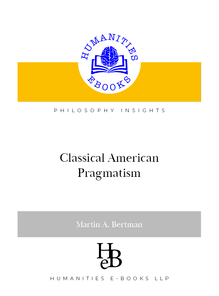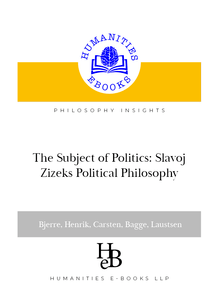-
 Univers
Univers
-
 Ebooks
Ebooks
-
 Livres audio
Livres audio
-
 Presse
Presse
-
 Podcasts
Podcasts
-
 BD
BD
-
 Documents
Documents
-
- Cours
- Révisions
- Ressources pédagogiques
- Sciences de l’éducation
- Manuels scolaires
- Langues
- Travaux de classe
- Annales de BEP
- Etudes supérieures
- Maternelle et primaire
- Fiches de lecture
- Orientation scolaire
- Méthodologie
- Corrigés de devoir
- Annales d’examens et concours
- Annales du bac
- Annales du brevet
- Rapports de stage
La lecture à portée de main
85 pages
English
Découvre YouScribe en t'inscrivant gratuitement
Je m'inscrisDécouvre YouScribe en t'inscrivant gratuitement
Je m'inscris
Obtenez un accès à la bibliothèque pour le consulter en ligne
En savoir plus
En savoir plus
85 pages
English
Obtenez un accès à la bibliothèque pour le consulter en ligne
En savoir plus
En savoir plus

Description
Surveys key theorists in twentieth-century literary, cultural and historical theory.
Sujets
Informations
| Publié par | Humanities eBooks |
| Date de parution | 11 janvier 2021 |
| Nombre de lectures | 0 |
| EAN13 | 9781847600189 |
| Langue | English |
Informations légales : prix de location à la page 0,0200€. Cette information est donnée uniquement à titre indicatif conformément à la législation en vigueur.
Extrait
Philosophy Insights General Editor: Mark Addis
RUNNING HEàD 1
Critical Theory An Introduction
Jennifer Rich
Is ‘the truth’ ‘out there’?
http//www.humanities-ebooks.co.uk FoRadviceonuseoFtHisebookpleasescRolltopage2
Publication Data
© Jennifer Ric 2007
he Autor as asserted er rigt to be identified as te autor of tis Work in accord-ance wit te Copyrigt, Designs and Patents Act 1988.
Publised in 2007 byHumanitiesEbooks.co.uk Tirril Hall, Tirril, Penrit CA10 2JE
Reading and Listening Options
*To use te navigation tools, te searc facility, and oter features of te Adobe toolbar, tis Ebook sould be read in default view. *To navigate troug te contents use te yperlinked ‘Bookmarks’ at te left of te screen. *To searc, expand te searc column at te rigt of te screen or click on te binocular symbol in te toolbar. *For ease of reading, use <CTRL+L> to enlarge te page to full screen *Use <Esc> to return to te full menu. *Hyperlinks (if any) appear in Blue Underlined Text.
Licence and permissions
Purcasing tis book licenses you to read tis work on-screen and to print one copy for your own use. Copy and paste functions are disabled. No part of tis publication may be oterwise reproduced or transmitted or distributed witout te prior written permission of bot te copyrigt owner and te publiser. Making or distributing copies of tis book constitutes copyrigt infringement and would be liable to prosecution. hank you for respecting te rigts of te autor.
ISBN 978-1-84760-018-9
An Introduction to Critical Theory
Jennifer Rich
Bibliographical Entry:
Rich, Jennifer.An Introduction to Critical Theory. Philosophy Insights. Tirril: Humanities-Ebooks, 2007
A Note on the Author
-Jennifer A. Rich is an Assistant Professor of English at Hofstra University. Her pub lished work includes essays on îlm, rhetoric, Shakespeare and composition. She is currently working on an overview of Feminist Theory, forthcoming from the Humanities Insights Series.
Contents
A Note on the Author Introduction “The Truth is Out There” Russian Formalism Roman Jakobson Vladimir Propp Structuralism Ferdinand De Saussure Claude Lévi-Strauss Semiotics Roland Barthes Post-Structuralism and Deconstruction Jean-François Lyotard Jacques Derrida Paul De Man Psychoanalytic Theories Jacques Lacan Julia Kristeva Understanding the Discursive Nature of History and Culture Michel Foucault Clifford Geertz Postcolonial Theory Edward Said Gayatri Chakravorty Spivak Ngugi Wa Thiong’O Paul Gilroy Bibliography Primary Sources Secondary Sources
Introduction
“The Truth is Out There”
In the 1990s, an American television showThe X Filesfeatured two intrepid FBI agents who were charged with solving ‘X îles’,cases that were unsolvable through tradi-tional FBI methods. These cases deîed rational approach: science wouldn’t explain them; psychology was useless; motivation was difîcult if not impossible to establish; the X îles, in their very nature, rendered positivist explanations—ones that rely on the careful observation of phenomenon—quaint, useless and naïve. The agents, Fox Mulder and Dana Scully, were frequently oppositional in their approach—although their differences complemented each other in their attempts to explain the phenomena they investigated. While Dana Scully was a medical scientist, believing passionately in the ability of science to explain all phenomena, Fox Mulder was a discontented behavioural psychologist—a maverick who believed just as passionately that conven-tional scientiîc methods were useless against what he saw were the manifestations of governmental conspiracy manipulating extraterrestrial phenomena for malevolent purposes (although sometimes ‘X île’ cases were extra-governmental and extra-extra terrestrial in nature). For Mulder, parapsychology, the occult, and extra-terrestrial abductees were the sole sources for reliable—if positivistically immune—explana-tions. Despite their considerable philosophical differences, Mulder and Scully shared a belief that would become the mantra for the show itself, that the ‘THE TRUTH IS OUT THERE.’ The opening sequence ofTheX Files, scored with spooky music and featuring Munch-like faces, ended with a shot of the sky overwritten with the words ‘the truth is out there’ in capital letters. Thus, Mulder and Scully both believed in some kind of discoverable truth immune from governmental manipulations, psy-chological neuroses and all of the other elements that might compromise its clear apprehension. The theorists in this volume would all disagree with Mulder and Scully. Although their theories differ considerably in methodology, in philosophical outlook, and in expression, they all contain within them one common thread—that is, they no longer believe in a ‘Truth’ free from the compromising complications of the nature of lan-
Critical Theory 7
guage, culture, power relations, rhetoric, discourse racism, and so on. This notion of a ‘Truth’—outside of culture, outside of language—is roundly rejected by all the theorists that we will study. Their interest, then, is not so much how to discover a newrealtruth, but how to understand the way in which what we recognize as ‘truth’ comes about.
Russian Formalism
Russian formalism (1910–1930) was a movement devoted to creating ascience of literary theory, particularly in regard to the study of poetic language. Formalists were keen to establish literary study as a discipline as rigorous as psychology and soci-ology. In so doing, Russian formalists adopted a variety of methodologies: Viktor Shklovsky, for example (a pre-eminent formalist in his day), approached literary texts as if they were machines and the literary critic the mechanic who is able to isolate the text’s internal workings. As George Steiner remarks in considering Shklovsky’s works, ‘Literary works, according to this model, resemble machines: they are the result of an intentional human activity in which a speciîc skill transforms raw mate-rial into a complex mechanism suitable for a particular purpose’ (Russian Formalism18). Shklovsky’s model, however, was unable to account for literary growth and change, so it was quickly and quietly abandoned by the formalist school.
Roman Jakobson
Roman Jakobson’s contributions to this school of theory remain inuential: they incorporate linguistics into literary study in ways that anticipate the structuralist movement, although he was not Saussurian (see below) in his approach to linguis-tics. Jakobson differed from other formalists in methodology but not in intention. He too was concerned to develop a clear science of the text. His approach, however, is marked by a reliance on linguistics in order to reveal the characteristic that deînes literature as literature, or more particularly, poetic language as poetic. The question that dominates his most famous work ‘Linguistics and Poetics’ is, quite simply, ‘what makes a verbal message a work of art?’ (Richter 852)
Linguistics and Poetics (1960)
Published in 1960, some thirty years after the heyday of Russian formalism, ‘Linguistics and Poetics’ is Jakobson’s manifesto of critical practice. It carefully and clearly sets out the tenets and methodology of formalist analysis. For this reason, it is important
-
 Univers
Univers
-
 Ebooks
Ebooks
-
 Livres audio
Livres audio
-
 Presse
Presse
-
 Podcasts
Podcasts
-
 BD
BD
-
 Documents
Documents
-
Jeunesse
-
Littérature
-
Ressources professionnelles
-
Santé et bien-être
-
Savoirs
-
Education
-
Loisirs et hobbies
-
Art, musique et cinéma
-
Actualité et débat de société
-
Jeunesse
-
Littérature
-
Ressources professionnelles
-
Santé et bien-être
-
Savoirs
-
Education
-
Loisirs et hobbies
-
Art, musique et cinéma
-
Actualité et débat de société
-
Actualités
-
Lifestyle
-
Presse jeunesse
-
Presse professionnelle
-
Pratique
-
Presse sportive
-
Presse internationale
-
Culture & Médias
-
Action et Aventures
-
Science-fiction et Fantasy
-
Société
-
Jeunesse
-
Littérature
-
Ressources professionnelles
-
Santé et bien-être
-
Savoirs
-
Education
-
Loisirs et hobbies
-
Art, musique et cinéma
-
Actualité et débat de société
- Cours
- Révisions
- Ressources pédagogiques
- Sciences de l’éducation
- Manuels scolaires
- Langues
- Travaux de classe
- Annales de BEP
- Etudes supérieures
- Maternelle et primaire
- Fiches de lecture
- Orientation scolaire
- Méthodologie
- Corrigés de devoir
- Annales d’examens et concours
- Annales du bac
- Annales du brevet
- Rapports de stage
Signaler un problème
YouScribe
Le catalogue
Le service
© 2010-2024 YouScribe




















